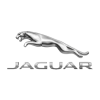
2017 Jaguar XF


Key Specifications for 2017 Jaguar XF






Buyer’s Guide
With the new F-Pace crossover and XE compact sedan arriving in dealerships the year, Jaguar’s product range is looking ready to tackle the established competition. The mid-size XF, redesigned just last year, continues to impress with its sleek shape, lightweight aluminum construction, and sumptuous interior.
The big change for model year 2017 is the addition of diesel power to the XF range. The entry-level engine is now the Ingenium turbodiesel, which is shared in common with the F-Pace and smaller XE. At 2.0 litres in displacement, it’s fairly small compared to the six-cylinder units from BMW and Audi, but it’s right in line with what Mercedes-Benz will feature for the new E-Class. Power is rated at 180 hp, which is down 21 hp on the Merc, but torque is the Jag’s advantage: 318 lb-ft vs. 273 lb-ft. Fuel economy figures haven’t yet been released, but they should be as good as the Benz, if not better.
The other engine on offer to the XF is a 3.0-litre supercharged V6. In standard guise, it produces 340 horsepower and 332 lb-ft of torque, while the range-topping performance XF S gets a 380-hp version of this engine. Despite the added horsepower, torque remains flat at 332 lb-ft. Oddly, the badge on the XF’s tail reads 35t despite the fact that it’s neither 3.5 litres large, nor turbocharged.
Regardless if you go diesel or gas, the XF uses a ZF eight-speed automatic plus standard all-wheel drive. Power steering is electric, and the XF shares some of its suspension componentry with the F-Type sports car, making it a fun all-round drive. Certain trims also offer adaptive damping which varies ride stiffness between supple and firm. 19-inch wheels are standard on all XFs other than the XF S, which features standard 20-inch wheels.
The XF continues to be offered in three levels of trim. The base trim level is Premium, the mid-grade Prestige, with R-Sport taking the position of flagship on the hierarchy. The XF S adds driver-focused technology features as well as a more powerful engine.
Aside from featuring more rear cabin space and a substantial trunk, the XF’s interior retains its sense of occasion. Available two-tone leather upholstery with contrast stitching conveys a sportier feel than most of the vehicles in its class, and the XF certainly isn’t lack in drama with its rotary shift knob and air vents that swing open upon ignition.
Standard on the XF is Jaguar’s InControl infotainment system which uses an 8.0-inch touchscreen display; optional is a larger 12.3-inch version which is about as broad as the main centre console. Like its bigger brother, the XJ, a TFT instrument cluster can be optioned with reconfigurable instruments as well as a full-scale map. Jaguar also offers full connectivity through a factory-installed internet connection, but the speed is only 3G versus the 4G-LTE that GM OnStar and others utilize. Opt for it, and the connectivity will allow you to remote-start, lock and unlock, heat or ventilate the front seats, and check up on the vehicle’s state from a mobile phone. One oversight is the lack of Apple CarPlay or Android Auto, but InControl does support certain smartphone apps.
The XF 20d Premium kicks off the range at $60,000, with the Prestige selling for $65,000 and the R-Sport $68,500. Opting for the supercharged gas version adds $2,000. The performance XF S sells for $74,000.
Review & Compare:
Photos
























































































































AutoTrader Review




















